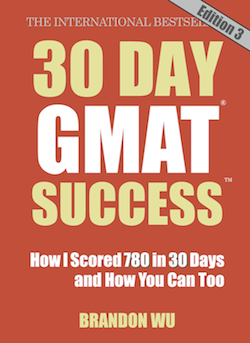How to Avoid More Data Sufficiency Traps
Several months ago I wrote a post about not jumping to conclusions on data sufficiency questions. Sometimes, you will need to do more math on these questions than you think is necessary in order to avoid selecting a trap answer. Today’s post will be a continuation of the same idea, but we are going to focus on one particular trap – the too obvious answer.
Let’s start with question 163 on page 290 of the Official Guide, 13th Edition. Here, you might be tempted to select answer A and move on, since all A requires is that you divide 60 by 4. But when one statement is so obvious, you should take a long, hard look at the other statement. Since the first statement has tricked your mind into thinking this is a very easy question, your instinct will most likely be to gloss over the second statement because you already think you have the answer. However, if we look carefully at statement 2, we realize that we can create an equation with one variable, which means the statement is sufficient. If x is the original number of members, we divide 60 by x to get the value of the contribution of each member and then add $2 for the increase when (equals sign goes here) we take away 5 from the original number members, x. So, the equation is 60⁄x + 2 = 60⁄(x – 5).
Do you want to see a few more questions that try to trap you this way? Flip to page 288 and look at number 142. Statement 1 is obviously sufficient because it gives the total number of tosses, but statement two seems to be irrelevant because it discusses points earned based on results of the tosses. But here again we can create an equation with one variable. Heads, represented by x + 4 (according to the question stem) will be multiplied by 3 and tails, represented by x, will be multiplied by 1. So, the question is 3(x + 4) + 1(x) = 52. We then discover that x = 10, so there were 10 tails and 14 heads, for a total of 52 tosses.
One more? OK, let’s turn to page 284 and look at number 107. Statement 1 is sufficient because you would only need to divide the total number of frames by the seconds and then multiply by 60 to convert to minutes. But what about statement 2? Again, we can write a single variable equation: 6x + x = 14. This gives a value of 2 for x and a total of 12 minutes to run the cartoon. Although the information provided in statement two was entirely different from that in statement one, it was still sufficient to answer the question. Also, notice that 12 minutes is 720 seconds, which means that there are 24 frames per second. This is consistent with the information in statement 2. If the correct answer is D, the information in the two statements cannot contradict each other.
I’m not saying that every time one statement is too obvious, the other statement will always be sufficient and the correct answer will be D, but I am saying, once again, that you shouldn’t jump to conclusion. Be sure to give each statement its fair amount of attention so that you don’t miss an easy point.
Image courtesy of aleonmail with Creative Commons License


Comments